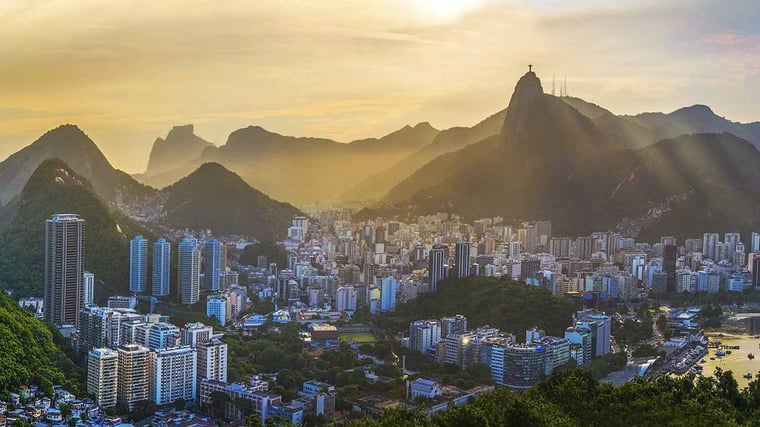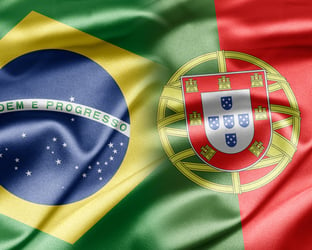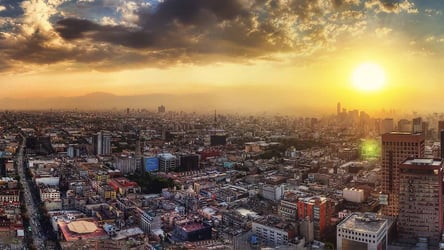Brazil is a country known for its diverse and colorful culture. Brazil is South America's largest country in both total area and population and the world's fifth-largest country by population and seventh largest in terms of economy. Whether you're looking to partner with an existing business in Brazil or looking to reach Brazilian customers, here are few important considerations for targeting a Brazilian audience.
Languages
Brazilian Portuguese is spoken by nearly all of Brazil's 211 million people, is the official language., and used in newspapers, radio, television, business, and government. Brazilians view Portuguese as a part of their national identity since they are the only Portuguese-speaking nation in the Americas. In fact, most of the world's Portuguese speakers speak Brazilian Portuguese. Brazilian differs from European Portuguese regarding vocabulary choices and pronouns, similar to American English vs. British English.
In 1990, the Portuguese Language Orthographic Agreement was signed, with the goal of uniting the Community of Portuguese-speaking countries (CPLP) with a standardized language across all Portuguese speaking countries. This affected spelling of approximately 1.65 percent of Portuguese words.
For most businesses looking to attract Brazil-based customers, content must first be translated into Brazilian Portuguese. Many Brazilians may understand Spanish as well since it is a Romance language, but this should be a secondary translation for the Brazilian audience. Also, localizing your digital and printed collateral goes a long way in reaching a Brazilian audience.
Currency
Brazil's official currency is known as the Brazilian Real. It ranks nineteenth in the world in traded value. If you are looking to localize your website's global eCommerce experience fully, then you will need to convert currency to the Brazilian Real. Currency will need to be converted properly. In Brazil, they use commas instead of periods as decimal points and periods instead of commas. For example $1,500.34 (USD) would be written as $1.500,34 (BRL).
While most Brazilians use credit cards to shop online, it is essential to note that a lot of Brazilian credit cards are restricted from cross-border transactions. (They are issued domestically and can only work in Brazil.) Therefore, one should find a local partner in Brazil to assist with processing orders.
Other payment methods to consider are the Boleto [Bancário] and installment plans. The Boleto is regulated by the Brazilian Federation of Banks (FEBRABAN). After customers order online, they receive a pre-filled bank slip. Payments are then paid at ATMs, banks, lottery agencies, post offices, and supermarkets in Brazil.
Many online stores in Brazil also offer payment in installments, as this is common payment practice. A business would work with an installment service in Brazil to set this up. Customers would select available preset installment intervals at checkout. You should plan on adjusting your pricing accordingly if offering installments to cover any added costs.
Where are Brazilians Spending their Money?
Before 2012, Brazil's economy was one of the fastest-growing in the world. Their middle class reached about 115 million people (over half of the population). However, the growth rate slowed, and Brazil entered a recession in 2014. 2017 brought about economic recovery, but strong fluctuations in Brazil's GDP remain compared to other large economies globally. According to McKinsey & Company's profile, "Meet the New Brazilian Consumer," Brazilian consumers are consistently looking for ways to spend less and save money. Yet, Brazilians still perceive foreign products and brands as a sign of wealth. They remain loyal to brands but shop these brands for the lowest price at different locations. Also, a lot of Brazilians are trading down but are still splurging on alcoholic beverages and personal care products. Evaluate your price points and present your products with an eye towards your product's excellent value proposition.
Overall, Brazil is a highly connected population, with over 140 million users making it the largest online market in Latin America and the fourth-largest in the world. Therefore, a website that embraces Brazilian language and culture (color choices, image choices, etc.) will appeal to Brazilian consumers. Online, desktop's account for about 68 percent of their purchases, according to eMarketer, while mobile-only purchases accounted for the remaining third.
Brazil's Business Culture
In Brazil, personal relationships are essential parts of business culture with a strong preference for face-to-face meetings over written communication. Meetings should be scheduled at least two weeks in advance, and your goal should be to establish a relationship first, then business will take place. You should expect dinner conversations to start informally as informal before moving to business, and topics to avoid include politics or any controversial current events facing Brazil. When presenting business cards, have one of the sides translated to Brazilian Portuguese, and give your card with the Portuguese side facing up and toward the recipient.
If you're looking to do more business in Brazil, the first step is to present your content in their language, respecting their values and needs. For more help in connecting with the Brazilian market, get in touch with LinguaLinx.






